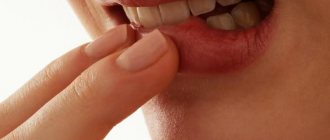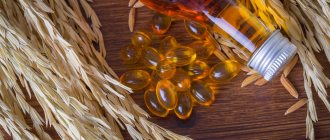Pain in the liver refers to complaints ranging from discomfort in the right hypochondrium to intense (in some cases continuous) pain. Interesting fact: the liver itself cannot hurt - anatomy does not allow it. There are no pain receptors on it; nature did not provide them. The pain symptom is caused by its shell (capsule) or neighboring organs, which may signal a problem. The best way to notice the “approaching disaster” in time is to undergo a special diagnosis, which will be prescribed by a gastroenterologist.
Why does pain occur? Even the most minor deviations in the organ change its size, which contributes to the stretching of the membrane on which there are receptors. Pathology of the pancreas, gallbladder, bile ducts can also be accompanied by pain in the right hypochondrium.
Pain and discomfort in this organ are of a different nature: aching or cutting pain, constant or short-term, it can intensify from excessive stress, appear after taking even a small amount of fatty or spicy foods, or in stressful situations. Sometimes a painful symptom in the right hypochondrium is accompanied by flatulence, stool problems, heartburn and bad breath.
If the disease is in a period of exacerbation, the temperature may rise, severe weakness and headache may appear.
Causes
Pain in the right hypochondrium can signal a number of pathologies. These could be problems with the pancreas, gallbladder or bile ducts. When the liver is significantly enlarged, pain is caused by the membrane surrounding the organ.
In order not to let the situation become critical, be sure to make an appointment with a doctor if you experience any unusual or uncomfortable sensations in your right side.
Our clinic employs true professionals who will quickly diagnose and prescribe appropriate treatment.
To eliminate pain in the right hypochondrium, it is necessary to establish the exact cause of its occurrence. It can be caused by:
- gastritis in the period of exacerbation, pancreatitis (irradiation of pain)
- stones in the area of the bile ducts or gallbladder, as well as in the inflammatory process of the gallbladder - cholecystitis
- inflammatory liver diseases (in particular, hepatitis) Hepatitis is of two types: infectious and toxic. Causes: infection with viruses A, B and C. Main symptoms: dull pain, yellowness of the skin or sclera of the eyes, weakness, nausea, and less often - itching.
- liver cirrhosis One of the most severe diseases. There is a proliferation of connective tissues and the development of inflammatory processes, impaired circulation both in the organ itself and in neighboring ones. Causes of occurrence: in more than 50% of cases, it is alcohol consumption. Main symptoms: in the initial stages they are very similar to manifestations of hepatitis. Diagnosis is made using ultrasound or biopsy.
- irritable bowel syndrome
- malignant neoplasms (including secondary metastatic liver disease)
- closed injuries As a rule, they arise as a result of a blunt blow to the abdominal area.
Pain can be caused by:
- physical activity (even minor),
- eating fatty, spicy or fried foods (usually accompanied by nausea),
- bad habits (smoking, alcohol).
Is your liver okay?
The liver is the undisputed leader in the number of functions. After all, for years it synthesizes bile, neutralizes toxins, inactivates excess hormones, synthesizes proteins, stores vitamins and microelements, maintains blood clotting and performs many other “works.” However, no reserves are infinite, and even this “tireless worker” fails at some point.
"Unexpected" symptoms
Modern lifestyles are often not conducive to liver health. And this hardworking organ can suffer from food overload, an abundance of medications and dietary supplements, taking sports supplements, as well as toxins, viral infections and many other factors.
At the same time, due to the diversity of its “activities” and powerful regenerative abilities, in the early stages the liver signals “problems” with completely unexpected symptoms.
And the following may come to the fore:
- signs of deficiency of vitamin D and A, which are not only stored in the liver, but also require bile for absorption;
- signs of iron deficiency anemia (weakness, hair loss, dry skin and inflammation, decreased immunity and others), since the liver normally stores iron in the form of ferritin;
- persistent hormonal disorders, because the liver not only inactivates excess hormones, but also synthesizes the basis of many of them (cholesterol), and also provides their “transport” (carrier proteins);
- unmotivated fatigue, since the mitochondria of liver cells are the most active;
- cholesterol imbalance;
- the appearance of edema - due to a deficiency of proteins synthesized by the liver and “holding” the liquid part of the blood (plasma) from seeping into the tissues;
- increased bleeding and easy formation of “bruises”, because the liver synthesizes coagulation factors;
- distorted effect of drugs – in the form of signs of “overdose” and more pronounced side effects.
Well, dyspeptic symptoms such as nausea, bitterness in the mouth, stool disorders, discomfort and pain in the abdomen, especially after eating fatty foods, are “classic” signs of hepatobiliary “problems.”
How to check
The liver is simply a “factory” of chemicals. And the destruction of liver cells leads to the release of liver enzymes into the bloodstream. Of course, a minimum of such substances is present in the blood normally, because cells are destroyed “from old age.”
Well, their significant increase is the justification for treatment.
Thus, markers of liver “suffering” are the enzymes ALT and AST, the excess of which by 4 times or more is a sign of active hepatitis. And an increase in a smaller volume may indicate “overload”, previous viral infections and requires, at a minimum, observation over time and a “gentle regime” for the liver.
Another criterion for liver condition is the level of cholesterol and its fractions (especially triglycerides). After all, as already noted, cholesterol synthesis and maintaining “cholesterol” balance is one of the basic liver “options”.
The level of bilirubin, in particular direct bilirubin, is associated with the function of bile secretion. And it may indicate pathologies not only of the liver, but also of the gallbladder (especially together with an increase in alkaline phosphatase and Gamma-GT).
And, if total bilirubin is increased, but direct bilirubin is not, then the liver and gall bladder have nothing to do with it. And the reason should be sought in the increased destruction of red blood cells.
Treatment
To temporarily relieve pain in the liver, patients take painkillers and antispasmodics on their own. Always remember that they can only be used after examination and recommendations from a specialist. Treatment is prescribed only after thorough diagnostic studies. Since many liver diseases have a similar course, it is necessary to make a correct diagnosis.
Before visiting a doctor, do not take painkillers or antispasmodics. They will mask important symptoms and make it difficult to make a diagnosis during examination.
Under no circumstances should you select medications yourself. And especially do not take medications prescribed to your friends in similar situations. There is no guarantee that the drugs that help them won't make things worse for you. Treatment is selected strictly individually.
To deal with this situation, consult a doctor as soon as possible. Our center is equipped with modern research equipment. This helps specialists make an accurate diagnosis and prescribe effective treatment as soon as possible.
Before visiting a doctor to relieve pain symptoms (instead of taking medications), pay attention to your diet. You can independently reduce the load on the organ.
The diet to eliminate pain in the liver should be gentle and low in fat.
- It is recommended to eat: black bread, low-fat dairy products, various cereals, vegetables and fruits, boiled meat and poultry (beef, chicken).
- it is necessary to completely exclude: fried, spicy smoked, and fatty foods, baked goods, mushrooms, pork, duck, canned food, confectionery, coffee.
In some cases, diet helps much more effectively than drug therapy.
The best diagnosis of pain in the liver is MRI of the liver and MRI of the gallbladder. To identify health problems in the early stages, doctors recommend periodically undergoing a full comprehensive examination of the body.
The contents of this article have been checked and confirmed for compliance with medical standards by a gastroenterologist of the highest qualification. category Grankova Tatyana Mikhailovna.
Why is it important to take care of your liver?
Despite the fact that the liver is quite hardy and capable of self-regeneration, it still requires careful handling. Since regular destruction of organ cells leads to an inflammatory process, tissue scarring and even cirrhosis.
In turn, such conditions reduce the size of the liver, make it dense and change the normal structure. All this leads to disruption of the functioning of the organ, as a result of which the formation of bile worsens, the blood is poorly cleared of toxins and drug residues, and poor digestion of fats is observed.
The destruction of the liver is caused by the consumption of alcoholic beverages, unhealthy diet, viral pathologies and other conditions that provoke damage to its cells. As a rule, various diseases do not cause characteristic symptoms until serious damage to the organ occurs.
Consequences of hepatic colic
The interval between relapses of painful attacks is often calculated in months, or even years. Because of this, many patients do not attach due importance to this pathology and do not seek medical help. As a result, this results in a whole bunch of diseases:
- Non-calculous, acute or emphysematous cholecystitis.
- Reactive pancreatitis.
- Hydrocele of the gallbladder.
- Cholangitis.
- Empyema (excessive purulent accumulation inside the affected organ).
- Perforation of the gallbladder.
- Gastric fistulas.
- Intestinal obstruction caused by the formation of gallstones.
Symptoms of pathology
The medical term “colic” is described as “sharp, frequently recurring, cramping pain. The occurrence of this condition is caused by an involuntary muscle spasm. Therefore, the surest sign of the presence of hepatic colic is private pain in the right hypochondrium. However, sometimes they radiate to other areas:
- Right scapula – with obstruction of the common bile/cystic duct.
- Various areas of the chest and abdomen - with slow recirculation of bile acids.
- Back – during prolonged attacks lasting more than 5 hours.
Those who:
- Does not tolerate fatty foods well or does not tolerate them at all.
- Constantly experiences pain of the same intensity.
- Feels painful discomfort with sudden movements.
- Suffers from periodic pain in the liver area, and attacks last from 15 minutes to 5 hours.
- Cannot work in an inclined position.
- Suffering from (at first glance) causeless vomiting.
Who is at risk of developing fatty liver disease?
NAFLD is a multifactorial disease resulting from exposure to a number of risk factors:
- abdominal obesity (waist circumference more than 94 cm in men and 80 cm in women);
- an increase in the level of triglycerides in the blood more than 1.7 mmol/l, cholesterol and a decrease in high-density lipoproteins;
- increased blood pressure more than 130/85 mm Hg;
- impaired glucose tolerance, prolonged hyperglycemia (type 2 diabetes mellitus);
- insulin resistance.
up
Medicines used in the treatment of diseases of the liver and biliary tract
Drugs for the treatment of the liver, depending on the mechanism of pharmacological action, can be divided into 3 large groups.
- Hepatotropic:
- choleretic (choleretics, cholekinetics);
- cholelitholytic;
- hepatoprotectors.
- Etiotropic:
- antiviral,
- antibacterial,
- antifungal,
- antiprotozoal.
- Symptomatic:
- antispasmodics (neurotropic, myotropic);
- analgesics;
- anti-inflammatory drugs;
- antiemetics;
- vitamins;
- detoxifying (including antidotes);
- corticosteroids;
- anticytokines;
- probiotics.
Why is fatty liver disease dangerous?
Non-alcoholic fatty liver disease (NAFLD) progresses gradually and has the potential to develop into cirrhosis. Fatty liver disease will become the most common cause of liver cirrhosis requiring liver transplantation in the next 20-30 years. NAFLD includes the following stages of the disease: hepatic steatosis, non-alcoholic steatohepatitis and fibrosis with a possible outcome in cirrhosis with an increased risk of developing hepatocellular carcinoma.
For many years, steatosis was considered a benign disease, but experience has shown that this disease increases the risk of cardiovascular complications and diabetes. The prevalence of NAFLD is 20-25%, and among obese patients it is 90%. Fatty disease usually develops at the age of 40-60 years, women get sick more often.
up
Phosphogliv* – restoration and protection of the liver
Phosphogliv* is a liver treatment drug with anti-inflammatory, antioxidant and antifibrotic properties. In its production, two active components are used: essential phospholipids and glycyrrhizic acid.
Essential phospholipids
– structural elements of liver cell membranes. In the treatment of liver diseases, phospholipids have restorative and regenerative effects.
Glycyrrhizic acid
is a substance with pronounced anti-inflammatory, antifibrotic and antioxidant properties.
Acting in combination, the active components of the drug Phosphogliv* mutually enhance and complement each other, significantly increasing the effectiveness of therapy. The hepatoprotector Phosphogliv* can be indicated for use as a drug for the restoration of liver cells in the treatment of acute and chronic forms of viral hepatitis, steatosis, toxic lesions and as part of complex therapy for liver cirrhosis.
Types of liver damage
- Infectious diseases (viral hepatitis).
- Toxic lesions (alcohol, drugs, etc.).
- Autoimmune diseases.
- Diffuse lesions of the liver parenchyma (metabolic disorders).
- Vascular pathologies of the liver.
- Storage diseases (hemochromatosis, etc.).
- Liver helminthiasis.
- Benign and malignant tumors.
Depending on the location of the pathological process, liver diseases are divided into:
- for diseases of the liver parenchyma and interstitial connective tissue;
- damage to the bile ducts;
- pathologies of the vessels of the portal system and hepatic veins.







